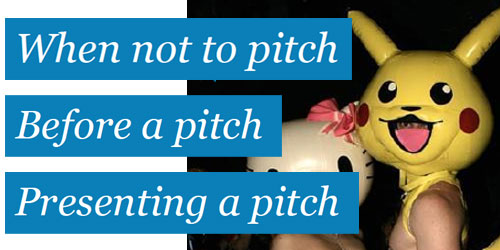Pitching: Getting Back To Basics

My involvement with the pitch process tends to switch between being knee-deep to non-existent – it all depends on what the brief requires and who’s the right guy for the job.
I recently gave a presentation to a group of design students in Southampton on this very subject. When I asked how many actually knew what a pitch was, I was surprised to see only two or three hands go up from the 120 students in the lecture theatre. In my eyes the pitch process is an integral part of any agency’s skill set, so to see the students’ lack of exposure to something of such importance came to me as a bit of a shock.
We’re often asked by our own designers and developers: ‘what happens in the pitch process?’ and that’s a good question. Knowing what and why decisions are made before, during and after a pitch is something that can benefit an agency’s operation. The more everyone in the agency knows about the decisions that are made, the better the agency runs: knowledge is a valuable asset.
Now, I’m not suggesting that developers start presenting every pitch, but exposing everyone (developers included) to the choices that are made and the processes that are in place can help each individual grow their own understanding of the business, enabling everyone in the agency to move forward together as one.
The presentation is really a layman’s guide to the pitching process, which can be applied when and where required. Whatever your level of experience, I’m sure you’ll benefit from listening to our perspective on the subject. We’ve found that regularly getting back to basics (approaching it from the ground up) when looking for new angles often helps everyone get the most from a brief.
What Is Your Mountain?
The first, and in my opinion the foremost part of the pitch process is qualifying yourself. At Browser we use the metaphor of a mountain. The metaphor is pretty simple; we see our mountain as a place that we want to be at the top of in 5 years’ time. Every time we cast our eyes on a new brief, the first question is always: will this project help us get to the top of our mountain?
When we look at a brief we assess whether the strategic and/or financial gains that a project would provide will help us get to the top of our mountain. If the answer is yes, we move forward and start the pitch process. But if the answer is no, we don’t pitch. Spending your valuable time on a pitch with no strategic or financial gain won’t benefit you or your client. Making the right decision early on, which sometimes means saying no to a brief, is always a difficult decision to make. Nevertheless, that initial decision can save you time, and money, and help you take another step toward the top of your mountain.
This sets the tone for the remainder of the presentation, throughout which I address issues that are often forgotten when qualifying a brief. It should provide a good introduction, or maybe a helpful refresher to the pitching process. Enjoy.